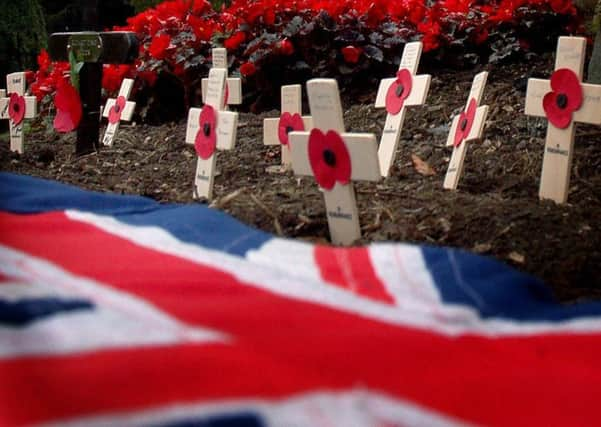Column: Forever in our hearts and land


Last week, I headed to Cambridge for a couple of days. Part work, part pleasure.
After a trip to the theatre, an incredible meal - life-changing, you could say - and a little bit of work, we headed back to Northampton.
Advertisement
Hide AdAdvertisement
Hide AdOn the journey home, we drove by the Cambridge American Cemetery, which opened in 1956 to commemorate American servicemen and women who died in World War Two.
Everything was clean cut, the grass looked as though it had been measured by the millimetre and the grand white stone could have convinced even you that we were driving through the US.
As I drove, to the left of me lay the American grass and architecture; to the right lay the rambling English countryside. I was intrigued, and we decided to stop.
We pulled up and stepped out of the car, the tall concrete entrance read, ‘Cambridge American Cemetery’ with an eagle spreading its wings underneath.
Advertisement
Hide AdAdvertisement
Hide AdWalking in, the first thing that strikes you is the uniformity. It was astonishing - each gravestone was made from cold white marble and meticulously placed.
Most of them had crosses, marking a Christian soldier, but many displayed the Star of David, showing Jewish faith.
Regardless of their background, every gravestone stood side-by-side, unsegregated by religion, as they did on the battlefield.
It was a particularly bright, autumnal day, and yet there was nothing unkempt or blustering about the cemetery.
Advertisement
Hide AdAdvertisement
Hide AdWorkers milled around, blowing leaves and trimming hedges. Nothing was left unattended.
The path along the gravestones lead to a memorial, a large building that read ‘To the glory of God and in memory of those who died for their country’.
A large, intricate map, showing where each plane had taken flight, while the windows were dotted with tributes to each of the 50 states.
Outside, a wall running along the left of a water feature on which were the names of over 2,000 servicemen and women who died.
Advertisement
Hide AdAdvertisement
Hide AdWalking along, it was overwhelming how many names there were; each name representing a person who had a family, and friends, and aspirations, and favourite books, and favourite dinners, it was almost too harrowing to look.
There is little more sobering than wondering at the gravestones of those who died for their country - whichever country - and looking upon them knowing many of them did not live to be the age you are now.
Each of our tiny, day-to-day experiences - like trips away and dinners with loved ones - are so vastly significant when you consider how many will never experience those moments again, and the mothers and fathers and daughters and sons for whom life continued after the war, who had to stomach family dinners that had the unfillable void of one empty chair, where once sat the person who left everything to fight for their country - but never came home.